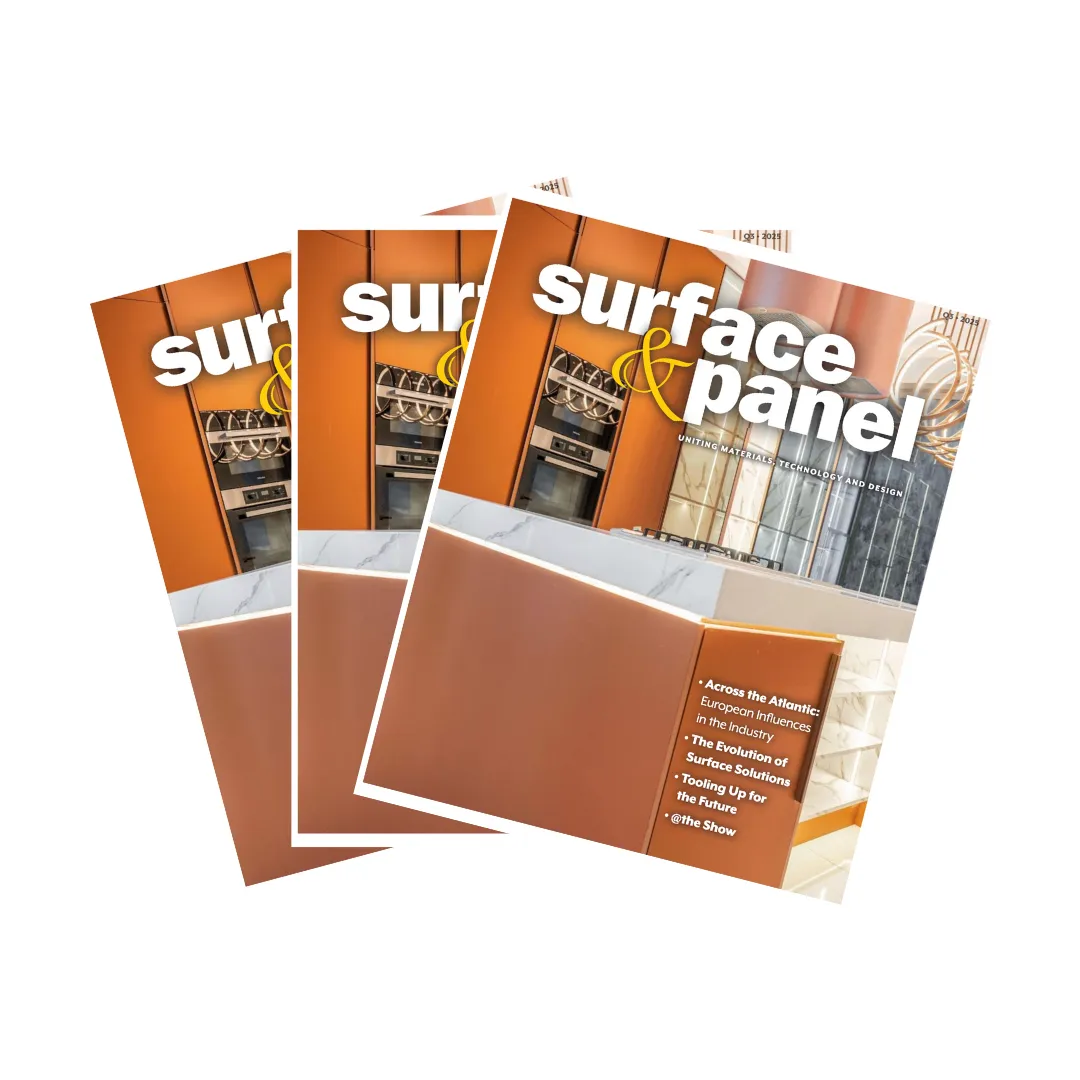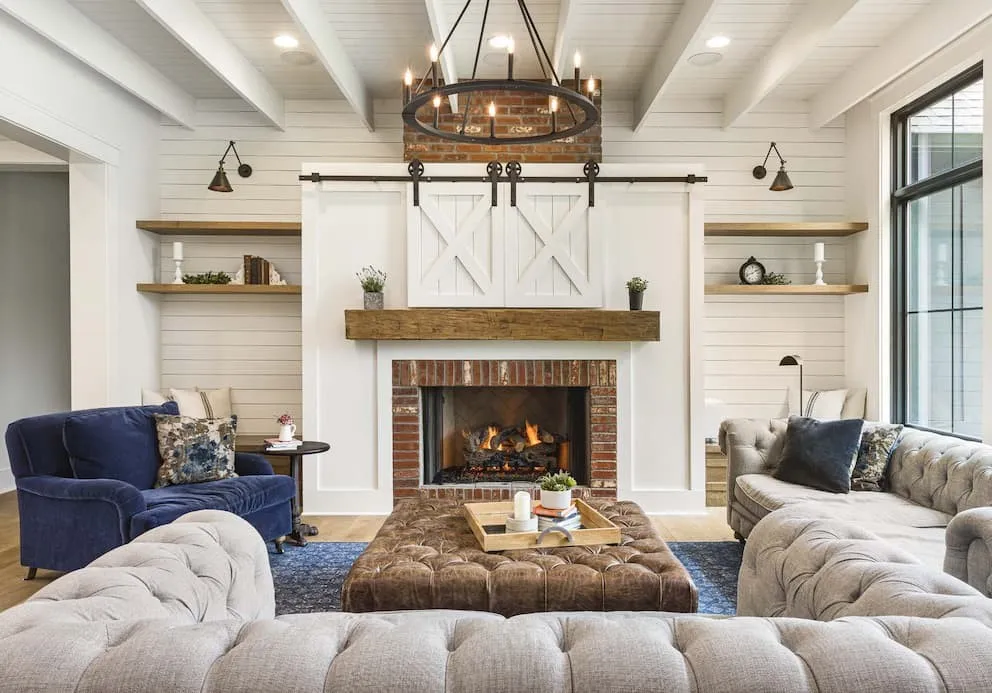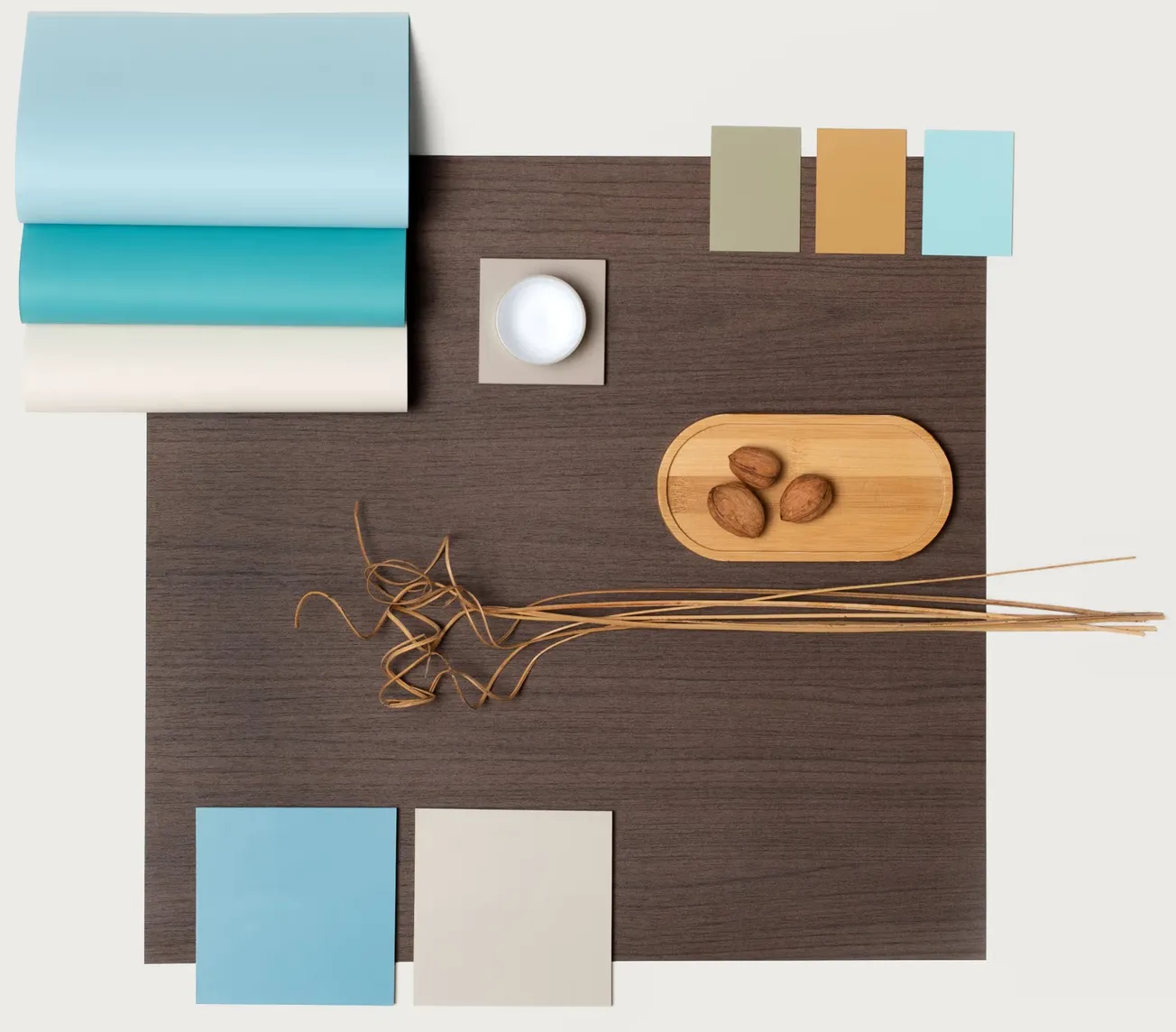Table of Contents
New System Makes Finishing More Efficient and Ergonomic
by Phil Stevenson, AWFI

Obtaining a consistent color of stain on wood can be challenging.
While maple has become a favorite in many sectors of the wood industry, it can be the most difficult on which to achieve a consistent stain color. A single-step wiping stain process often falls short of satisfactory results. Many finishing operations have moved away from single-step wiping to a spray-to-color stain only or a two-step dye stain, wiping stain process.
These types of stain systems give great results providing the color steps are engineered and applied correctly.
The following process elements are critical to success.
• Correct stain formulation.
• Appropriate gun technology and set up.
• Application technique.
The following are typical for most solvent-based stains:
Stain formulation:
Stain formulation has a major influence on color consistency. Many coating manufacturers formulate with 100 percent acetone for the stain-vehicle system.
Acetone is a favorite solvent to use for EPA compliance and reduced VOCs due to its exemption status. Acetone is an extremely fast-evaporating solvent and requires the most operator skills to apply uniformly. The fast evaporation of acetone causes poor stain wetting and flowing properties. This can result in uneven application and dry powder spraying in hot weather.
New exempt solvents have been approved in many air quality regions of the country. These solvents have a slower evaporation rate and provide a good replacement for acetone.
If volatile organic compounds are not restricted in your facility, other solvents such as ethyl alcohol and methyl ethyl ketone can be added to the formula to increase the uniformity of the application of the stain. A slow- to medium-evaporating lacquer thinner blend can also be used as a vehicle for good results.
The color strength of the stain should be formulated to allow for two to three passes of stain application. If time permits only one pass, the strength of the stain color needs to be formulated precisely to allow the operator to hit color without going too dark or too light. All stain colors should be formulated to the same color strength to allow the use of a standard application process throughout the range of colors.
Adding 5 to 10 percent binder to the stain improves consistent stain color and will allow the operator to “read” the color more accurately.
Spray equipment selection and set-up
We recommend using a precision high-end HVLP spray gun for spraying all spray-to-color materials. A uniform pattern is essential in spraying spray-to-color stains consistently. Many spray-to-color stain inconsistencies are due to striping of the color because of poor stain atomization. Expect to invest over $500 to buy a gun with a consistent pattern and uniform application.
For pressure-feed guns, a point 6mm to 8mm set-up works best with spray-to-color stains. For other non-pressure fed guns, a 1.0mm to 1.2mm tip size is commonly used.
Pressure-fed systems should be set up with a fluid backpressure regulator. Generally, the fluid pressure should be set between 5 to 10 pounds.
When using multiple guns on an automated-spray machine, the fluid flow rate on the gun should range between 60-80 grams per minute per gun when using an average 3-4 meter feed speed. For feed speeds higher than 4 meters, expect to use much higher flow rates.
The actual flow rate must be determined by gun speed and number of passes to achieve a slightly wet appearance that evaporates immediately. The flow rate should not be too low to cause dry spray or too high to mottle or puddle the stain on the surface of the wood. For hand spraying, the HVLP gun should be set at a flow rate at the tip of around 90-100 grams per minute.
The atomization air should be set to the lowest value possible to minimize “halos” and “bounce back.” The air pressure setting will vary greatly depending on the volume or CFM delivered to the gun.
To provide the volume of air necessary to operate, the HVLP guns must be fitted with a 3/8-inch diameter hose, high-flow fittings and regulators. Insufficient airflow to the gun will cause the gun to perform poorly, resulting in stain flutter and large particle size. Atomization air and the air cap should be set to 7-8 PSI and 15-25 PSI at the air regulator.
If the PSI setting at the regulator requires higher than 25 pounds, the volume of air is insufficient and may cause poor gun performance and a pressure drop. Air-to-fluid ratio at the gun must remain consistent or a color variation in the stain may occur.
Fan pattern width of the gun should be set to a relatively flat pattern with uniform amount of stain across the width of the fan pattern. Normally, an 8-inch fan pattern is ideal and 8-10 inches at the part.
Spray application technique
An 8-10-inch gun-to-part distance must be maintained at all times when using proper technique.
Always use a 50 percent overlap with the first and last pass, starting and ending with half of the width of the spray pattern spraying off the part to maintain a consistent coverage of the part.
Use a gun speed to achieve 40 percent color on the first pass, 80 percent of the color on the second pass and a light touch-up and blend-to-color on the final pass. Compare color to a color block step panel standard to maintain control of the stain color to the correct depth of color.
As in all processes, these recommendations are for guidelines only. However, standardizing the process with these metrics and techniques will provide a process for successful applications.






